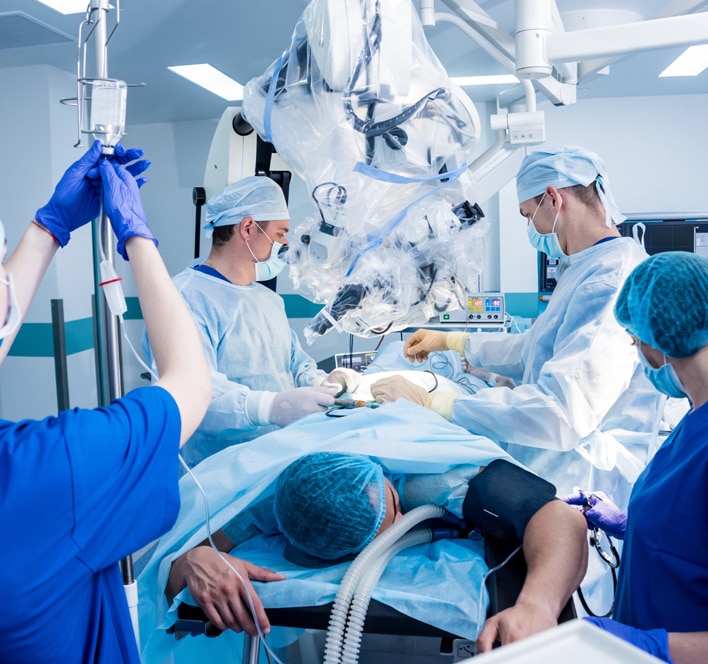A significant number of people in the U.S. suffer from various spine conditions, with scoliosis alone affecting about three in 100 people. This condition, characterized by abnormal curvature of the spine, is mostly diagnosed in children, especially during adolescence. Luckily, advancements in medical technology offer many treatment options for scoliosis and other spine deformities. One of these medical breakthroughs is growing rods.
If your child has been diagnosed with scoliosis, you might wonder whether growing rods can help. NJ Spine & Orthopedic can help answer any questions you may have about growing rods and how they can help.
What Are Growing Rods?
Growing rods, also called growth rods, are rods typically made of metal that are placed in the spine to facilitate normal growth in children who have not attained skeletal maturity. Growth rods help promote growth and delay final fusion in children whose backbone is still growing. This is because early fusing may slow or hinder development, which can have complications.
Depending on the patient’s unique circumstances, one or two rods may be used. There are also different growing rods that can be used, but all are attached to the spine in two spots, often above and below the curve. Additionally, patients return to the hospital every few months for the rod(s) to be adjusted to keep up with the growth.
Types of Growing Rods
As we already learned, there are various types of growth rods that are utilized for different purposes and circumstances. There are three main categories, with applications depending on each patient’s case and needs. These include:
1. Traditional Growing Rod
This is a type of treatment in which the metal growth rod attached to the spine is occasionally lengthened by conducting a simple surgery. Typically, this technique involves connecting metal rods on the top and bottom of the spine or hips. Unlike fusion, screws are used only on top and bottom, and the rod is in between. This procedure allows continuous spine development, and no bracing or casting is necessary.
Every six to nine months, depending on the child’s growth, the surgeon will conduct a minor procedure to lengthen the rods. When the child attains the desired skeletal maturity, the rods are removed.
2. The Vertical Expandable Prosthetic Titanium Rib (VEPTR)
This moderately new type of growing rod was developed to specifically treat children with thoracic insufficiency syndrome. This condition prevents the lungs from growing as they should, which can mean breathing problems in infants or later in life.
Generally, a VEPTR is attached to the patient’s ribs on top and then screwed to the spine or hip on the bottom. Depending on the severity, one or two VEPTR rods may be used, but they all serve the same purpose, which is to allow the rib cage to expand as it should normally while treating the deformity.
3. MAGnetic Expansion Control (MAGEC) System
In most scenarios, this technique is similar to traditional rods and VEPTR in that the initial procedure involves attaching the magnetically controlled growing rod to the spine on top and either to the spine or hip on the bottom. The difference is that MAGEC rods have a magnetic lengthening device in the middle.
Instead of performing a surgical procedure to elongate the rods, an external remote is used to trigger the magnet in the rod, altering the length of the rod as needed. This can be done without anesthesia and takes a few minutes to complete, eliminating pain and significantly reducing the risk of infection and the effects of anesthesia.
Book a Consultation With a Skilled Spine Surgeon Today
If left untreated, scoliosis can significantly increase the risk of other spine conditions, breathing problems, and health conditions. If your child has been diagnosed with any type of scoliosis or spine disorder, such as thoracic insufficiency syndrome, growing rods can help correct the deformity before they’re old enough to undergo spine fusion surgery.
At NJ Spine & Orthopedic, we diagnose and treat all spine conditions. Our neurosurgeons are among the best-known and sought-after in the nation for their relentless pursuit of effective treatment techniques and success in hundreds of spine surgeries. If you, a loved one, or your child is suffering from any spine conditions, reach out to us to talk with one of our board-certified spine surgeons. To book your consultation appointment, call (866) 553-0612 or contact us online.

